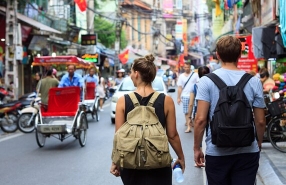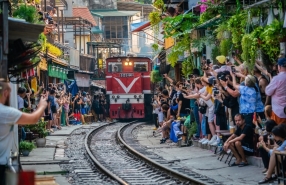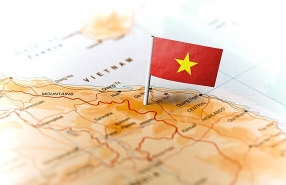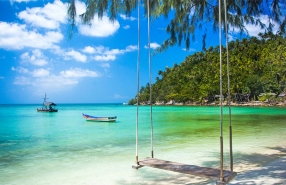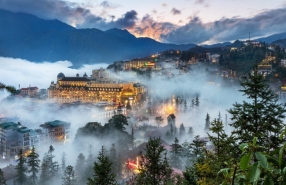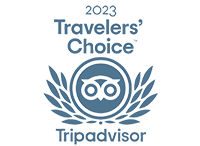Ha Giang Complete Travel Guide – What To Know Before Visiting Vietnam

Travel isn’t just about seeing places—it’s about seeing yourself. The Ha Giang Loop isn’t simply a route; it’s a mirror that reflects courage, curiosity, and connection. As you carve through clouds on Happiness Road, you’ll pass more than jaw-dropping cliffs and rice terraces—you’ll pass stories waiting to unfold. Maybe it's the twinkle in a child’s eye receiving your worn book, or the way riders help each other fix a flat in the rain. This Ha Giang Travel Guide will help you plan, but no guide can prepare you for the raw wonder of living each moment fully. And if you’re seeking for a Ha Giang trip, let us, a travel agency in Vietnam – Autour Asia guide your path, and let your heart lead the way.
Ha Giang Complete Travel Guide A to Z
- I. About Ha Giang - Why should you visit Ha Giang ?
- II. Ha Giang Loop Travel Guide: Routes, Tips & Itinerary
- III. Tips for your Ha Giang Loop
I. About Ha Giang - Why should you visit Ha Giang ?
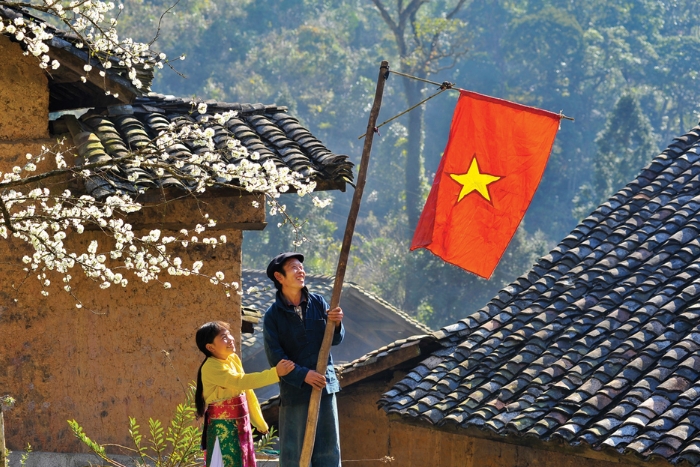
The Ha Giang Province in northern Vietnam is characterized by dramatic limestone spires and deep river gorges, notably within the Dong Van Karst Plateau, a UNESCO Global Geopark renowned for its unique geology and fossil sites. This remote region hosts over 22 ethnic minority groups—including Hmong, Tay, and Dao—whose traditional lifestyles are showcased at weekly markets in Dong Van and Meo Vac. The Ha Giang Loop winds through rugged terrain, offering panoramic views of emerald rice terraces cascading down mountain slopes and the turquoise waters of the Nho Que River.
Ha Giang remains less trafficked than more popular northern destinations like Sapa, making it ideal for travelers seeking genuine adventure and solitude. The sense of discovery is heightened by encountering hidden gems—such as the serene Tu San Gorge boat ride and Nai Waterfall—which lie off the beaten path. Mountain roads meander through villages perched on steep cliffs, with each bend unveiling new vistas, from the legendary God’s Cliff overlook at Ma Pi Leng Pass to terraced fields aglow at sunrise. Such landscapes, combined with rich cultural interactions, position Ha Giang at the top of any Vietnam bucket list.
II. Ha Giang Loop Travel Guide: Routes, Tips & Itinerary
1. How to get to Ha Giang from Hanoi?

As part of this Ha Giang Loop travel guide, overnight sleeper buses from Hanoi to Ha Giang town depart daily, covering the 300 km journey in approximately 7–8 hours. These buses typically include one rest stop and feature reclining seats, though riders should pack earplugs to muffle roadside karaoke disruptions. For greater comfort and flexibility, private minivan transfers cost $30–40 and offer door-to-door service, reducing transit stress during peak travel months. Motorbike enthusiasts may choose to bring personal bikes from Hanoi—subject to border permit logistics—or rent locally in Ha Giang town at $15–20/day, with passport copies held as deposit. Advance booking is advised in September–November when demand surges for the buckwheat flower season.
Arrivals to Ha Giang town generally occur before dawn, allowing early rest before looping begins. First-time Loop riders often spend one night in Ha Giang to secure motorbike rentals and necessary permits, and to gather maps detailing the QL4C and QL34 routes. Local travel agencies and homestays provide map booklets and route advice, ensuring travelers understand upcoming terrain and fuel stops. Those preferring minimal navigation concerns may hire an Easy Rider guide directly from town, combining transport with on-the-ground insights into village life and hidden attractions.
2. Options to get around in Ha Giang
Self-ride motorbike rentals are readily available in Ha Giang town, averaging $7/day for manual or semi-automatic bikes, with daily mileage caps and helmet provision. Rental shops require a passport photocopy or photo as a deposit, so carrying digital copies is recommended. Guided Easy Rider services pair travelers with experienced local drivers who handle navigation, road safety, and language barriers, enhancing cultural immersion and reducing logistical stress. For those seeking maximum comfort and minimal effort, hiring a private jeep provides air-conditioned transit, luggage space, and the ability to traverse the Loop faster, albeit at the expense of two-wheeled freedom.
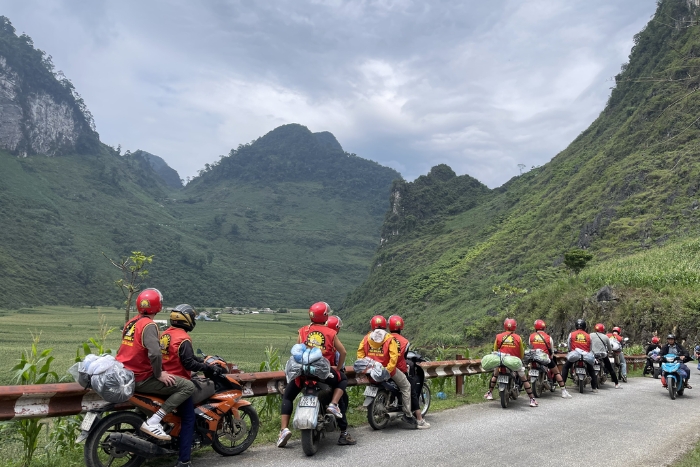
Selection of transport mode for your Ha Giang Loop depends on budget, skill level, and desired independence. Self-ride motorbike enthusiasts value the thrill of open-road exploration, while Easy Rider users gain insider access to unadvertised viewpoints and photo spots. Private cars benefit travelers with mobility limitations or large groups, enabling door-to-door pickups and flexible scheduling. Regardless of choice, verifying vehicle condition—brakes, tires, lights—and understanding basic repair kits (inner tube patches, socket wrench) is crucial before departure.
3. Best time to visit Ha Giang
The prime window for experiencing the Ha Giang Loop spans September to November, when lush Vietnamese rice terraces transform into golden mosaics and bloom in vibrant hues across the hillsides. Dry conditions during this period ensure safer riding and clearer skies for panoramic photography. From December to February, daytime temperatures range 15–20 °C while nights in high-altitude towns like Dong Van and Meo Vac can drop to 5 °C, making warm layers and thermal gear essential. Spring months (March–May) bring stable weather with moderate heat (20–25 °C) and fewer tourists, though wildflowers rather than buckwheat dominate the landscape.
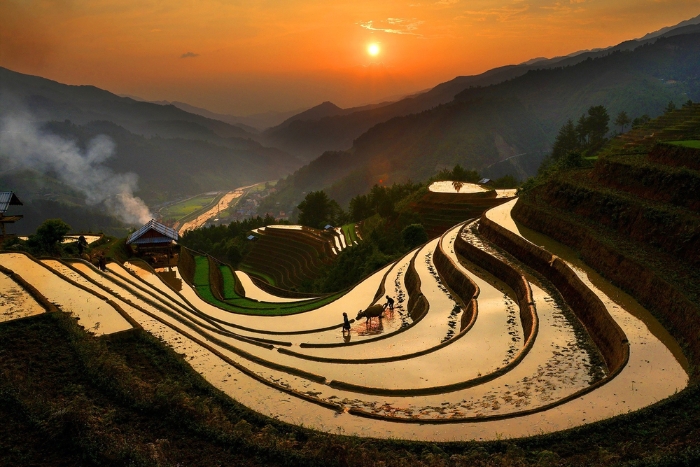
When planning the best time to visit Ha Giang, note that monsoon rains from June through August render mountain passes slippery and increase landslide risk, often leading to route closures and unsafe conditions. The stretch from Meo Vac to Du Gia is particularly prone to soil slippage during July–August, with frequent road blockages and safety hazards—travelers are advised to avoid this section in peak monsoon months.
Festival calendars can enhance cultural experiences: the H’Mong New Year (Gầu Tào) in December features khèn (bamboo flute) performances and pao throwing competitions, while the Khau Vai Love Market on the 27th of the 3rd lunar month draws crowds for matchmaking rituals and folk games in Meo Vac District. Accommodations during peak bloom sell out rapidly, so securing homestays or hotels 4–6 weeks in advance is strongly recommended.
4. Top 10 Things to Do and See in Ha Giang
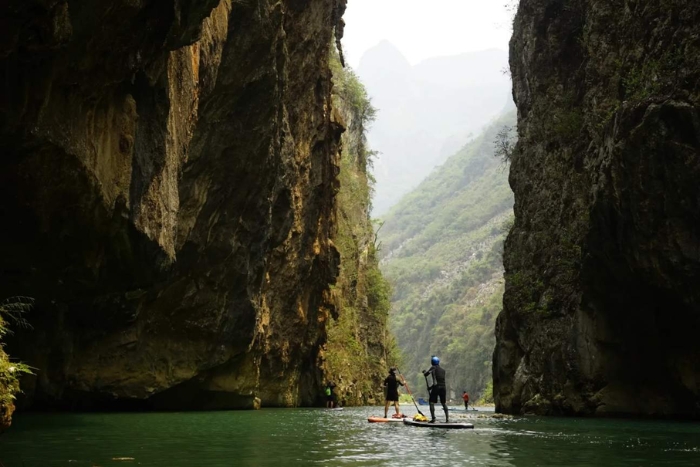
Ma Pi Leng Pass Viewpoint: A cliff-edge panorama over the Nho Que River gorge, renowned for its dramatic drop and sweeping vistas. The adjacent God’s Cliff offers a less crowded perspective on the same gorge.
Dong Van Karst Plateau: A UNESCO Global Geopark featuring limestone pinnacles, fossil sites, and winding roads that trace ancient seabeds.
Lung Cu Flag Tower: Marking Vietnam’s northernmost point, this tower provides border views and commemorates national unity.
Nho Que River Kayaking: Half-day excursions depart from Ma Pi Leng, offering a serene boat ride through narrow canyons lined with towering karst walls.
Dong Van Sunday Market: A monthly gathering where ethnic traders sell textiles, jewelry, and produce in full traditional attire.
Lung Phin Market: A smaller, weekly market noted for indigenous snacks and fewer crowds, ideal for photography and authentic interactions.
Nai Waterfall: Located near Quan Ba, this hidden gem rewards visitors with a cool plunge pool and lush forest setting.
Tu San Canyon: A descending path from Ma Pi Leng leads to a scenic boat trip through narrow gorges and calm waters.
Buckwheat Flower Fields: Peak bloom in Lung Tam and Pho Bang villages paints the valleys in pink and white hues.
Gau Tao Festival (H’Mong New Year): Held from the 2nd to the 4th day of the first lunar month, this Gau Tao celebration features khèn (bamboo flute) performances, pao throwing competitions, and rituals praying for health, prosperity, and fertility.
5. Where to stay in Ha Giang?
a) Auberge de Meo Vac
Where to stay in Ha Giang? Nestled in the heart of Meo Vac town, Auberge de Meo Vac occupies a restored 1930s Hmong ancestral house, combining traditional adobe walls with modern comforts. Four private bedrooms surround a central stone courtyard, where communal meals are served beside a wood-fired fireplace. The lodge sources building materials locally and employs Hmong artisans for ongoing maintenance, helping to preserve traditional architectural techniques and support the local economy. Situated at the end of the Ha Giang Extreme Loop, it offers easy access to Ma Pi Leng Pass viewpoints and Karst Plateau hikes, making it an ideal base for cultural and geological exploration.
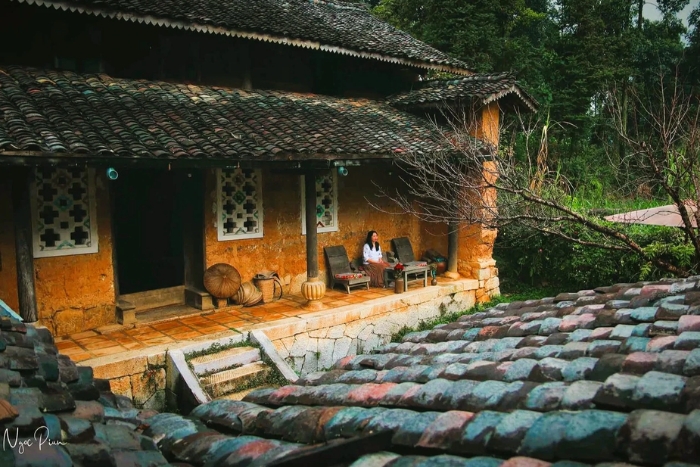
Sustainable practices at the Auberge include solar-heated water and rainwater harvesting for garden irrigation, minimizing environmental impact in this protected UNESCO Global Geopark zone. Locally inspired meals feature ingredients from nearby farms, while communal dining fosters cultural exchange between visitors and Hmong hosts. This focus on authenticity and stewardship ensures that guest stays help fund heritage conservation efforts in Ha Giang Province.
b) Panhou Retreat
Panhou Retreat is an eco-lodge set amidst lush forests and terraced fields of Hoang Su Phi District, featuring wooden bungalows encircling a central pond and organic vegetable gardens. Each room offers private balconies with panoramic mountain views and access to natural hot baths, sustainably heated using local geothermal resources. The resort partners with nearby ethnic communities to source produce and crafts, ensuring economic benefits flow directly to local families. Guided forest treks and cultural workshops highlight traditional agricultural methods and handicrafts, promoting cultural preservation alongside Ha Giang sustainable tourism.
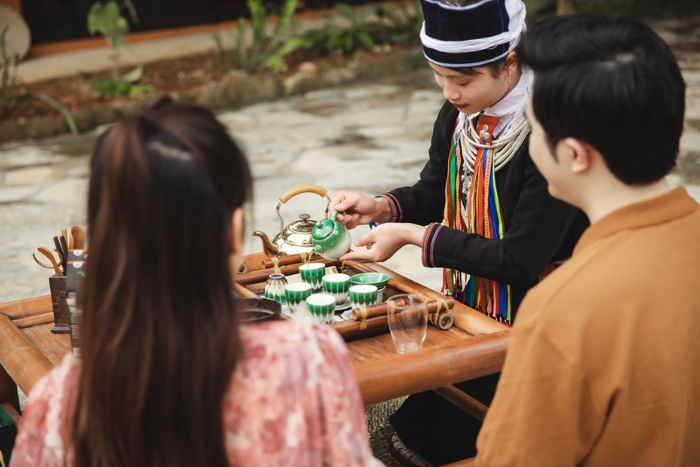
For those looking for accommodations in Ha Giang, Panhou Retreat stands out by integrating environmental initiatives such as on-site composting, wastewater treatment for irrigation, and reforestation projects in collaboration with village councils. By using low-impact construction—reclaimed timber and natural clay—and educating guests on Hoang Su Phi’s rich biodiversity, Panhou Retreat offers a responsible hospitality experience that balances guest comfort with long-term ecological health.
c) Hoang Su Phi Lodge
Located in the serene highlands of Hoang Su Phi, Hoang Su Phi Lodge features family rooms with private bathrooms, balconies overlooking Ha Giang rice terraces, and free Wi-Fi. The property’s restaurant specializes in local dishes, sourcing vegetables and herbs from on-site gardens tended by minority farmers, which supports sustainable agriculture and community livelihoods. Wellness amenities include a sauna and steam room powered by biomass boilers, minimizing reliance on fossil fuels, while on-site parking reduces the need for off-site transport.
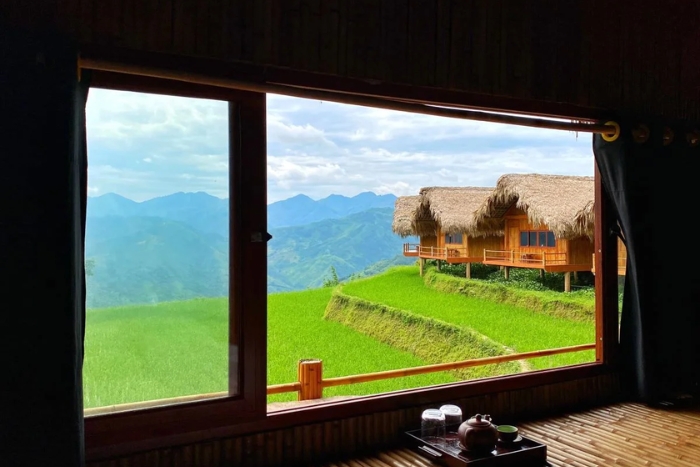
For those searching for authentic lodges in Hoang Su Phi, this lodge offers rich cultural engagement programs, including traditional weaving and embroidery demonstrations by local Tay and Dao artisans, helping to keep these crafts alive. A portion of room revenue is reinvested into educational scholarships for village youth, ensuring that tourism directly contributes to social development without compromising cultural integrity.
d) Lolo Village Homestay
Lolo Village Homestay sits at the entrance of Lo Lo Chai, offering seven earth-walled rooms built in traditional Lolo architectural style, complete with panoramic views of Lung Cu Flagpole and surrounding peaks. Operated by local families, the homestay uses locally sourced materials—wood, clay, and stone—to maintain harmony with the landscape and conserve resources. This authentic experience makes Lolo Village Homestay an ideal stop on the Ha Giang Loop, immersing travelers in the rich culture and natural beauty of the region.
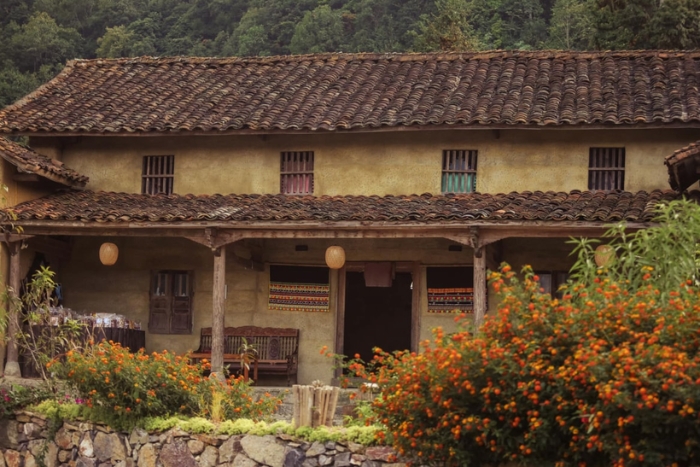
Commitment to sustainable tourism is evident in rainwater harvesting for toilets and gardens, as well as solar-powered lighting in common areas. By encouraging cultural exchange and providing fair wages, Lolo Village Homestay helps safeguard intangible heritage and ensures that tourism benefits the entire community, from elders teaching folklore to youth preserving their language and traditions.
6. What to eat in Ha Giang?
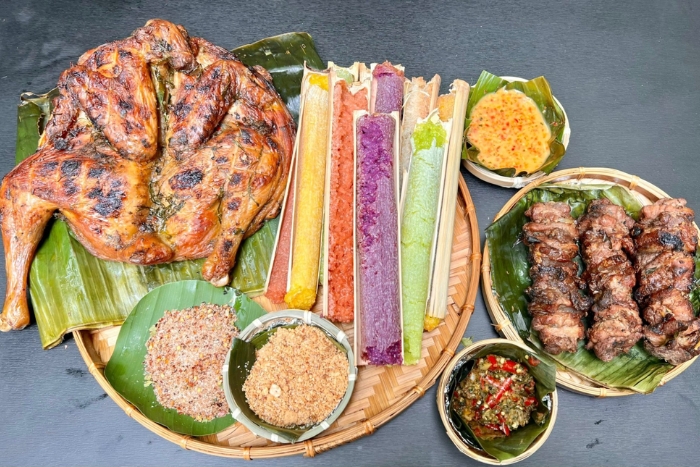
Ha Giang’s culinary scene centers on regional specialties and fresh produce. Thang co, a hearty stew traditionally made with horse meat and offal, is often adapted using beef or pork to suit more Western palates. It’s richly seasoned with local herbs and served communally in wooden bowls. Men men, a corn-based soup, provides warmth after long rides and is typically flavored with local garlic and scallions. Au tau porridge, made from rice and seasonal mountain vegetables, offers a soothing breakfast option in cool mornings. In Trang Kim village, artisan pho is elevated with mountain herbs and hand-pulled noodles. Street-food hygiene can vary; choosing high-turnover stalls and carrying hand sanitizer minimizes risk. Seasonal wild mushrooms and foraged greens further showcase Ha Giang’s biodiversity.
>>> Top 06 Delicious Restaurants To Visit In Ha Giang
>>> Top 14 Must-try Dishes In Ha Giang, Vietnam
7. Suggested Ha Giang Loop Itinerary 4 days
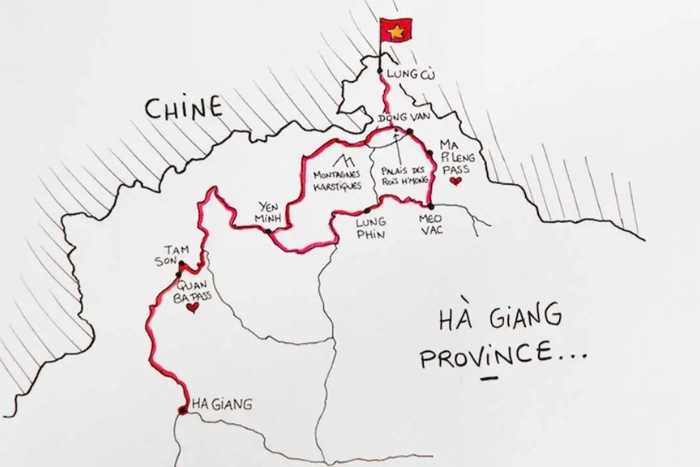
a) Day 1: Ha Giang → Yen Minh – 102 km
This first day marks the true start of your adventure on the Ha Giang Loop. With more than 100 km to go, this is the longest stage of the route. The roads are well paved, ideal for getting used to the bike and adapting to mountain riding conditions. On the way, you pass through the charming village of Tam Son, nestled in the heart of the karst hills. After a lunch break at a small local restaurant, you will continue your journey through Ha Giang panorama to reach Yen Minh before nightfall.
b) Day 2: Yen Minh → Meo Vac – 67 km
This second leg is full of visual highlights. This is the most emblematic stage of the loop, thanks in particular to the incredible Ma Pi Leng Pass, one of the most spectacular in Vietnam. From the top, the Ha Giang panorama is offered to you: the Nho Que River winds at the bottom of the Tu San canyon while the vertiginous cliffs sculpt the Ha Giang landscapes. You’ll have several photo stops, with the option of a detour to Vietnam's northernmost point, near Lung Cu Tower on the Chinese border. You arrive in Meo Vac at the end of the afternoon, still amazed by the panoramas crossed.
c) Day 3: Meo Vac → Du Già – 75 km
A change of scenery on the Ha Giang Loop: the paved roads give way to more rugged mountain tracks. This stretch, more isolated, looks more like an enduro session than a tourist ride. The tracks are stony, sometimes muddy, and require vigilance and skill. One of your scooters may even suffer a flat tire – a common but easily manageable experience in the area. Despite the challenging terrain, the peacefulness of this remote section allows you to fully enjoy the wild nature and the encounters with the locals. Du Gia, your stopover for the day, offers a peaceful and authentic setting.
d) Day 4: From Gia → Ha Giang – 72 km
The final stretch as you complete the loop! This return to Ha Giang is tinged with nostalgia: you know that the adventure is coming to an end. But this last stage is not lacking in charm: clear rivers, suspension bridges, bumpy mountain roads and green forests. You come across a few buffaloes and children from the villages on the way, always smiling. Even tired, you savor every mile of this final drive on the famous Ha Giang Happiness Road. Arriving in Ha Giang marks the end of your journey, but the memories – especially those of Ma Pi Leng Pass – will remain engraved forever.
>>> Ha Giang Loop Motorbike Tour 4 days
>>> Visit Ha Giang In 3 Days - Review By Mr. Faure
>>> 5 Days In Ha Giang - Review By Mr. Rieger
III. Tips for your Ha Giang Loop
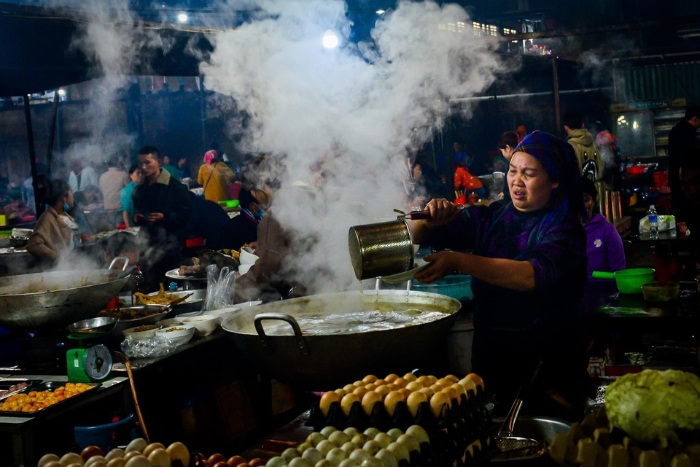
Respect Hmong cultural norms: Do not touch the heads of children (or adults), as the Hmong consider the head the seat of the soul and sacred.
Bring small educational gifts, not cash: Pack items like candy, colored pencils, or gently used books to donate to village schools—these contributions support learning and community development. Direct cash handouts to children can foster dependency, encourage families to pull children out of school to earn money, and feed local begging syndicates
Plan fuel management: Top up in larger towns such as Yen Minh or Dong Van, even if tanks aren’t empty, as gas stations are scarce beyond Meo Vac and Du Gia.
Pack layers for temperature swings: Days can reach 20–25 °C, while nights in high-altitude towns dip below 10 °C; include a warm jacket and thermal base layers.
Allocate 4–5 days, not three: A longer itinerary prevents exhaustion and allows time for unhurried cultural experiences, scenic stops, and spontaneous detours.
Consider an Easy Rider guide: Local riders handle navigation, road safety, and share insider recommendations to hidden viewpoints and authentic village visits.
Learn basic motorbike maintenance: Carry a minimal repair kit—inner tube patches, a socket wrench—and check brakes, lights, tire pressure, and chain lubrication daily
Book homestays early: During peak buckwheat flower season and golden Vietnamese rice terrace season (September–November), reserve rooms at least 4–6 weeks in advance to secure mountain- or riverside views
Visit weekend markets: The Dong Van and Meo Vac markets offer unique handicrafts, fresh produce, and genuine cultural interactions.
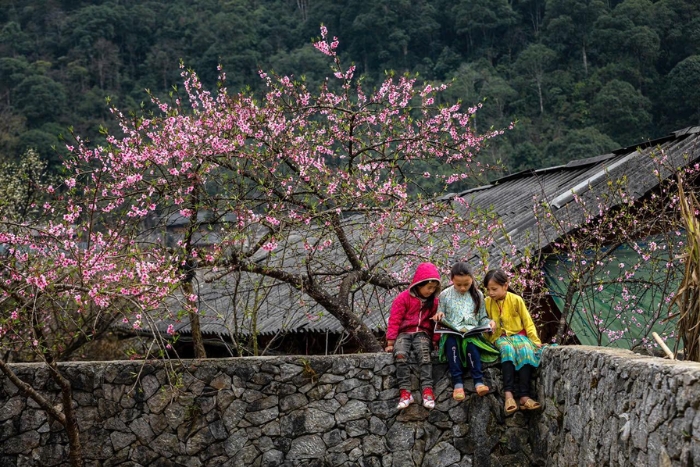
Ha Giang isn’t just a destination—it’s a shared story written with every turn of the Loop. This Ha Giang Travel Guide reveals not only mountain passes and markets, but moments that matter. With guidance from a travel agency in Vietnam – Autour Asia, your journey becomes deeper. You won’t just take memories—you’ll leave footprints in the hearts of those you meet. The Ha Giang Loop is a bridge: between you and the land, between your kindness and the stories people here will tell long after you’ve gone. You remember Ha Giang—and it remembers you.
>>> Ha Giang Rice Terraces
>>> Ha Giang Travel Guide
>>> Ha Giang Loop Tour from Hanoi 5 Days
>>> North Vietnam Tours
Ha Giang’s climate changes with the seasons. For a safe and scenic Ha Giang Loop, the dry season (November to April) offers ideal riding conditions. Avoid the rainy season (May to October), when downpours and fog reduce visibility and make roads slippery.
The Ha Giang Loop Tour 4 Days isn’t the place to learn motorbiking—its steep slopes, sharp bends, and winding roads can be dangerous for beginners. If you’re not confident riding, it’s best to book through a trusted travel agency that offers experienced Easy Riders for a safer, more enjoyable journey.
Yes. Many agencies offer "easy rider" tours, where an experienced local guide drives for you. It's a great alternative to explore the Ha Giang Loop and admire the Ha Giang rice terraces — without breaking the law. Ideal for travelers who prefer to avoid risks and enjoy the adventure to the fullest.
Related travel guide
Other similar articles
CUSTOMIZABLE BY LOCAL EXPERTS
Personalized trip at the original price!
REFUND GUARANTEE
We believe in our work and promise to give you money back.
GOOD PRICE / QUALITY
95% satisfied more than expected!
24/7 LOCAL SUPPORT
We are always available online to provide assistance at any time.
Most read articles
Autour Asia is highly recommended on
Embracing the mission of "Satisfied more than expected" and providing authentic experiences, we have received numerous recommendations on reputable travel forums:













